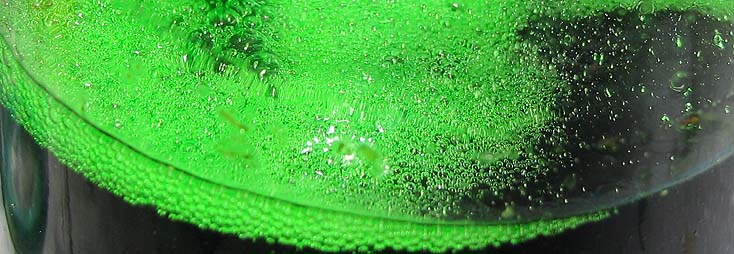
 |
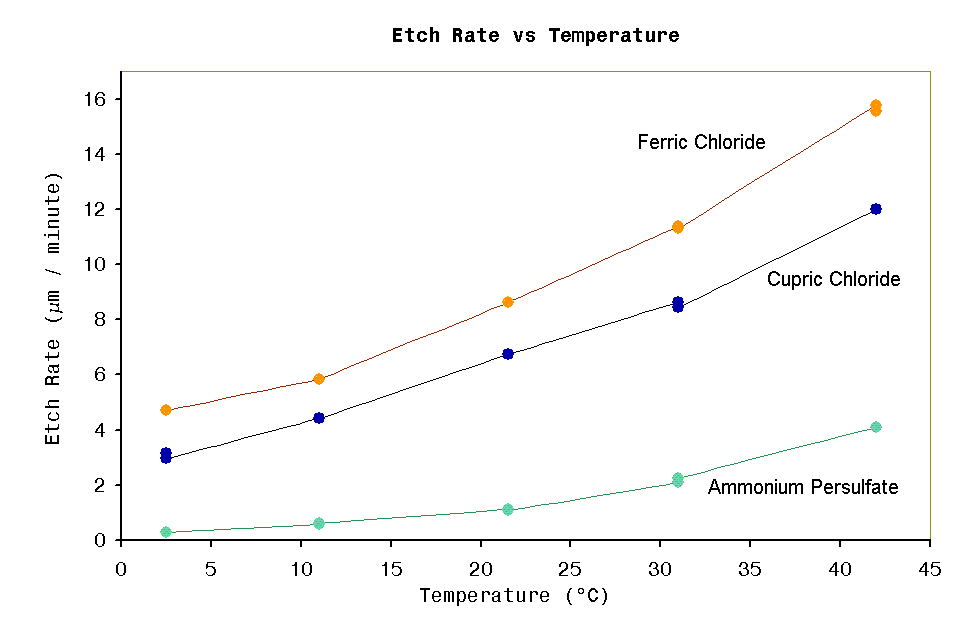
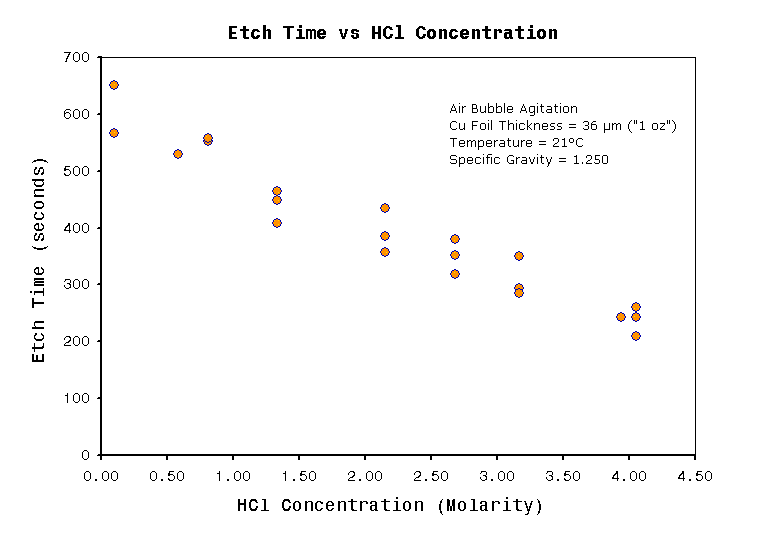
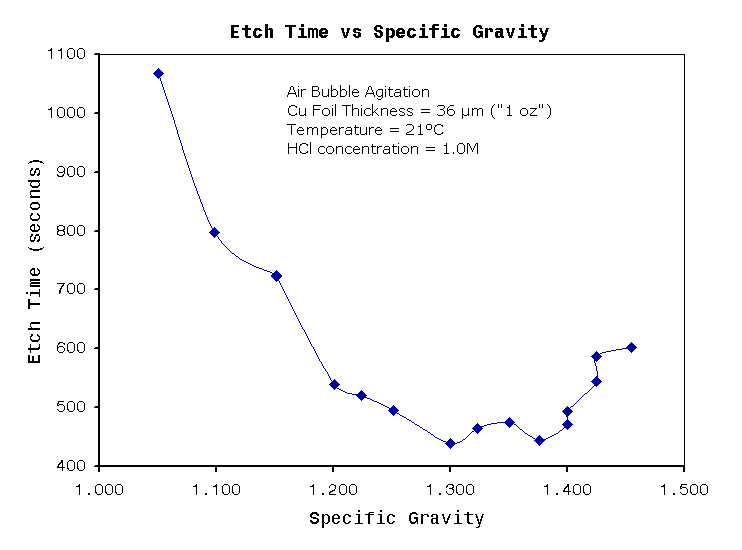
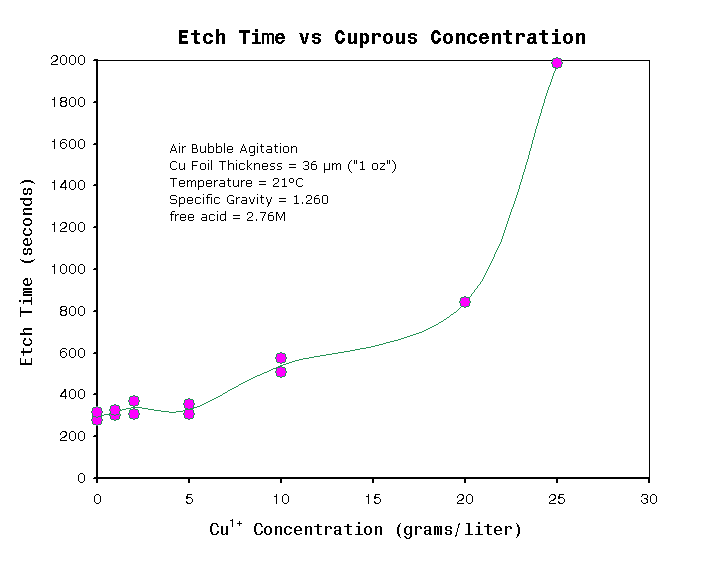
| Parameter |
Min |
Max |
Remarks |
| Free acid
concentration (molarity) |
1.0 |
3.5 |
HCl fuming
increases Etch speed increases. (see note 1) |
| Specific
gravity (g/cm3) |
1.220 |
1.380 |
Relatively
stable etch rate across range |
| Temperature
(°C) |
0 |
40 |
HCl fuming
increases. Etch speed increases. (see note 1) |
| Minimum bulk tank volume per board area (liters/cm2 ) |
0.016 |
- |
Assuming 50%
track coverage, double sided, 36 μm ("1oz") copper PCB. |
| Maximum monovalent copper ion, Cu1+ (g/liter) | - |
5 |
Color of
drops on white surface should appear bright green to olive dark green. Any signs of brown color indicates too high Cu1+. Also see Figure 5 |
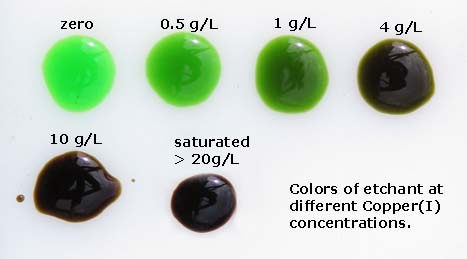
| Method |
Chemical Ingredients | pros |
cons |
| Metal + Air |
Concentrated HCl Copper Metal Hydrogen Peroxide 3% (optional) |
Low cost Ingredients widely available |
Long time to prepare (3 to 10
days) |
| Copper(II) Oxides |
Concentrated HCl Copper Hydroxide or Copper(II) Oxide |
Quickest. Least amount of labor |
May prove difficult or costly
obtaining copper salts |
| molarity |
% weight |
grams/liter |
| 7.57 |
24.63 |
275.9 |
| 8.24 |
26.6 |
300.6 |
| 8.93 |
28.56 |
325.6 |
| 9.63 |
30.54 |
351.2 |
| 10.4 |
32.54 |
377.5 |
| 11.1 |
34.5 |
404.0 |
| 11.8 |
36.58 |
431.6 |
See also:
Questions:
Hey very nice article! thanks for that. I just have a question, is it possible to etch other alloys of copper like brass with Cupric Chloride? Thanks for your answer :-)+
| file: /Techref/pcb/etch/CuCl2.htm, 51KB, , updated: 2021/10/14 09:21, local time: 2025/10/23 07:04,
216.73.216.53,10-2-207-162:LOG IN
|
| ©2025 These pages are served without commercial sponsorship. (No popup ads, etc...).Bandwidth abuse increases hosting cost forcing sponsorship or shutdown. This server aggressively defends against automated copying for any reason including offline viewing, duplication, etc... Please respect this requirement and DO NOT RIP THIS SITE. Questions? <A HREF="http://techref.massmind.org/techref/pcb/etch/CuCl2.htm"> Etching with Air Regenerated Acid Cupric Chloride</A> |
| Did you find what you needed? |
Welcome to massmind.org! |
Welcome to techref.massmind.org! |
.